- Caring for Gloxinia Plants at Home
- Light:
- Watering:
- Humidity:
- Temperature:
- Fertilizer:
- Pruning:
- Propagating:
- Pests and Diseases:
- Proper Lighting and Temperature for Gloxinia
- Lighting:
- Temperature:
- Watering and Humidity Needs for Gloxinia
- Fertilizing Gloxinia Plants
- 1. Choose the Right Fertilizer
- 2. Follow the Instructions
- 3. Apply Fertilizer During the Growing Season
- 4. Water Before Fertilizing
- 5. Use a Diluted Solution
- 6. Avoid Fertilizing Dormant Plants
- 7. Monitor the Plant’s Response
- Gloxinia Propagation Techniques
- Leaf Cutting
- Seed Sowing
- Tuber Division
- Pruning and Maintenance of Gloxinia Plants
- 1. Removing spent flowers:
- 2. Trimming back foliage:
- 3. Controlling pests:
- 4. Watering and fertilizing:
- 5. Providing proper light and temperature:
- 6. Repotting when necessary:
- 7. Winter care:
- Conclusion:
- Wintering Gloxinia Plants
- 1. Indoors or in a Greenhouse
- 2. Temperature
- 3. Light
- 4. Watering
- 5. Humidity
- 6. Fertilizing
- 7. Pests and Diseases
- 8. Propagation
- 9. Pruning
- Common Pests and Diseases of Gloxinia
- Pests
- Diseases
- Conclusion
- Handy Tips and Advice for Growing Gloxinia
- 1. Choosing the Right Location
- 2. Providing the Ideal Temperature
- 3. Watering Properly
- 4. Feeding Regularly
- 5. Supporting the Blooms
- 6. Propagating Gloxinia
- 7. Wintering Your Gloxinia
- Q&A:
- How often should I water my gloxinia?
- Can I propagate my gloxinia from leaf cuttings?
- Can I keep my gloxinia outside during the summer?
- How do I fertilize my gloxinia?
- What is the best temperature for gloxinia?
- Do gloxinias need a lot of sunlight?
- How do I store my gloxinia during the winter?
- Video: GLOXINIA , How to grow gloxinia and its care , propagation , speciality.
Gloxinia is a popular flowering plant that is beloved by gardeners for its vibrant blooms and lush foliage. Native to the tropical regions of South America, this plant is known for its trumpet-shaped flowers that come in a variety of colors including shades of pink, purple, and white. In addition to its beauty, the gloxinia is relatively easy to care for, making it a great choice for novice gardeners.
To keep your gloxinia happy and healthy, it is important to provide it with the right growing conditions. The plant prefers warm temperatures between 60 and 75 degrees Fahrenheit (15 to 24 degrees Celsius), and it thrives in bright but indirect light. It is also important to keep the soil consistently moist, as the gloxinia prefers a humid environment.
Gloxinias can be grown from both seeds and tubers, with tubers being the most common method of propagation. To propagate a gloxinia from a tuber, simply plant it in a well-draining potting mix and keep it moist until new growth emerges. Once the plant has established itself, you can transfer it to a larger pot with richer soil.
When winter comes, gloxinias require special care to survive. They are dormant during this time and should be kept in a cool, dark place with temperatures around 50 degrees Fahrenheit (10 degrees Celsius). Watering should be reduced during this period, as the plants do not require as much moisture. In the spring, your gloxinia can be brought back into the light and normal watering and care can resume.
In conclusion, gloxinias are beautiful and easy-to-care-for plants that can bring a touch of tropical beauty to any home or garden. With the right conditions and proper care, your gloxinia will reward you with its stunning blooms and vibrant colors year after year.
Caring for Gloxinia Plants at Home
Gloxinias are beautiful houseplants that are loved for their vibrant and colorful flowers. To keep your gloxinias happy and healthy, there are a few important care tips to keep in mind.
Light:
Gloxinias thrive in bright, indirect light. They should be placed near a window that receives filtered sunlight. Direct sunlight can scorch the leaves and flowers, so it’s best to avoid placing them in south-facing windows or in direct sunlight.
Watering:
Gloxinias prefer to be kept moist, but not wet. Water the plant thoroughly when the top inch of soil feels dry. Avoid overwatering, as it can lead to root rot. It’s also best to water gloxinias from the bottom by setting the pot in a tray of water and allowing the plant to absorb the moisture it needs.
Humidity:
Gloxinias are tropical plants that thrive in high humidity. To increase humidity around the plant, you can place a tray filled with water near the plant or use a humidifier. Misting the leaves with water can also help maintain proper humidity levels.
Temperature:
Gloxinias prefer warm temperatures between 70-75°F (21-24°C). They are sensitive to cold drafts, so make sure to keep them away from windows or doors that may let in cold air. Avoid exposing them to temperatures below 60°F (15°C).
Fertilizer:
Gloxinias benefit from regular feeding during their active growth period. Use a balanced liquid fertilizer once a month, following the instructions on the package. It’s important not to over-fertilize, as it can lead to burned roots or foliage.
Pruning:
To encourage bushier growth and more flowers, you can pinch back the stems of your gloxinias after they have finished flowering. This will promote new growth and help maintain a more compact shape.
Propagating:
Gloxinias can be propagated by leaf or stem cuttings. To propagate from a leaf cutting, select a healthy leaf and cut it near the stem. Place the leaf in a small container with moist potting soil and keep it in a warm, humid environment. After a few weeks, the leaf will produce new plantlets that can be transplanted into their own pots.
Pests and Diseases:
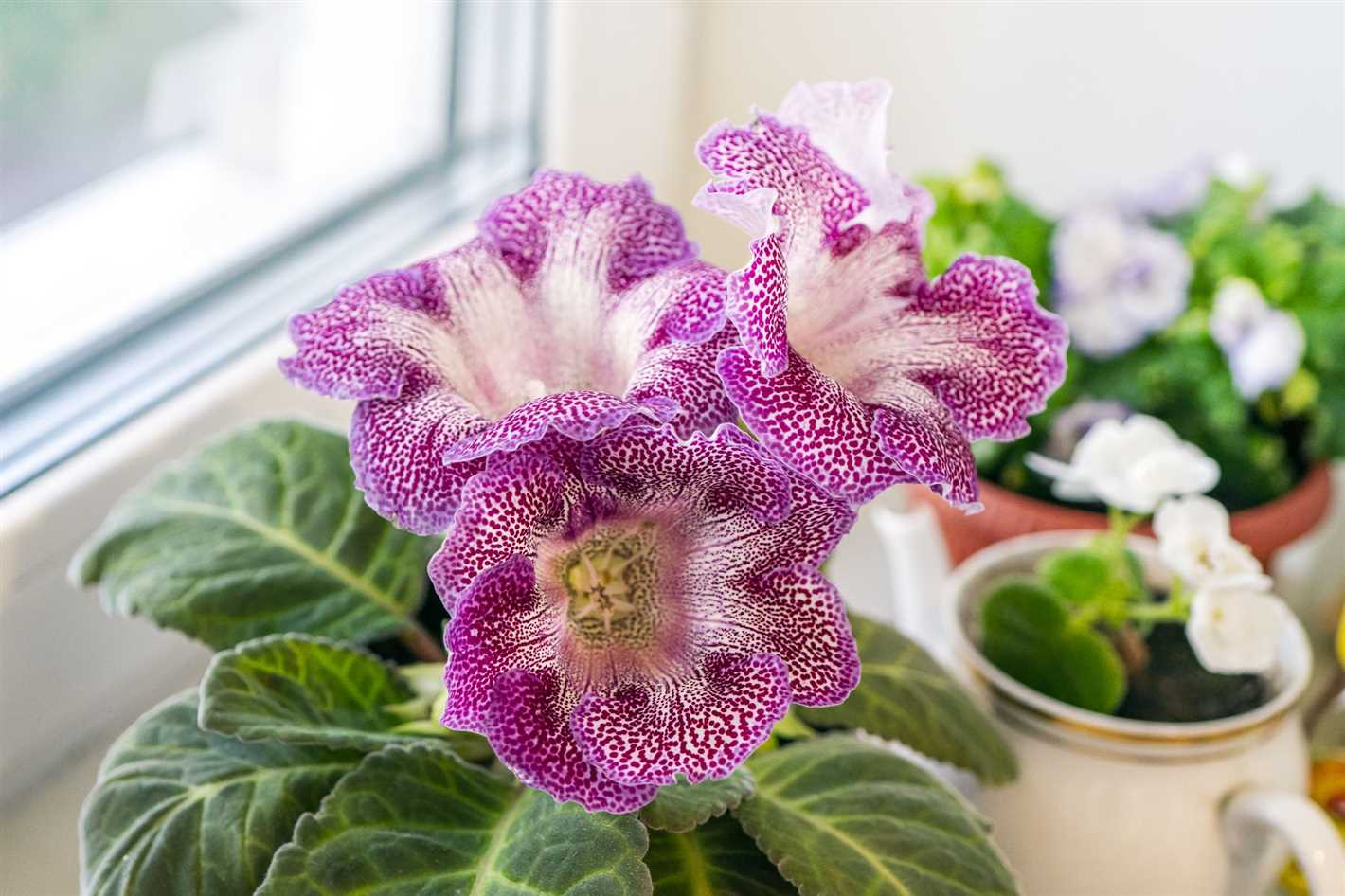
Gloxinias can be susceptible to aphids, mealybugs, and fungal diseases. Regularly inspect the plant for signs of pests or diseases and take appropriate action. In case of infestation, you can use insecticidal soap or a horticultural oil to control the pests.
By following these care tips, you can enjoy the beauty of gloxinias in your home all year round. Happy gardening!
Proper Lighting and Temperature for Gloxinia
Gloxinia plants require specific lighting and temperature conditions to thrive. Here are the guidelines for ensuring proper lighting and temperature for your Gloxinia:
Lighting:
- Gloxinia plants prefer bright, indirect light. Direct sunlight can scorch the leaves, so it’s best to place them in a location with filtered or diffused light.
- A north-facing window or an east-facing window is ideal for Gloxinias, as they can receive bright but indirect sunlight in these locations.
- Avoid exposing the plant to direct afternoon sun or placing it in a south-facing window.
Temperature:
- Gloxinias like relatively warm temperatures, between 70°F and 75°F (21°C – 24°C) during the day.
- A slight drop in temperature, around 60°F – 65°F (15°C – 18°C), at night is beneficial for the plant’s growth.
- Avoid exposing Gloxinias to extreme temperature fluctuations, as it can stress the plants and negatively affect their blooming.
- Keep the plant away from cold drafts and air conditioning vents, as they can cause temperature fluctuations.
By providing the right lighting and temperature conditions, you can ensure that your Gloxinia plant stays healthy and produces beautiful blooms.
Watering and Humidity Needs for Gloxinia
Watering:
- Keep the soil evenly moist, but not waterlogged.
- Water your gloxinia when the top inch of soil feels dry to the touch.
- Avoid overwatering, as it can lead to root rot and other problems.
- Use room temperature water to prevent shock to the plant.
- Water the plant from the base rather than from above to avoid getting the leaves wet.
Humidity:
- Gloxinias prefer a relatively high humidity level, around 60-70%.
- Place a tray filled with water near the plant to increase humidity.
- Mist the leaves regularly with room temperature water to increase moisture in the air.
- Consider using a humidifier or placing the plant on a pebble tray filled with water to maintain humidity.
Monitoring:
- Check the moisture level of the soil regularly to ensure it is not too dry or too wet.
- Observe the leaves for any signs of wilting or yellowing, as they may indicate inadequate watering or humidity.
- Adjust watering and humidity levels as needed based on the plant’s response.
| Watering | Humidity |
|---|---|
| Keep soil evenly moist, but not waterlogged | Preferably around 60-70% |
| Water when top inch of soil feels dry | Place water tray near the plant |
| Avoid overwatering | Mist leaves regularly |
| Use room temperature water | Consider using a humidifier or pebble tray |
| Water from base, not from above |
Fertilizing Gloxinia Plants
Gloxinia plants require proper fertilization to thrive and produce vibrant blooms. Here are some key tips for fertilizing your gloxinias:
1. Choose the Right Fertilizer
When selecting a fertilizer for your gloxinia plants, it’s important to choose one that is balanced and specifically formulated for flowering houseplants. Look for a fertilizer with equal amounts of nitrogen (N), phosphorous (P), and potassium (K), such as a 10-10-10 or 12-12-12 blend. This will provide the necessary nutrients for healthy growth and blooming.
2. Follow the Instructions
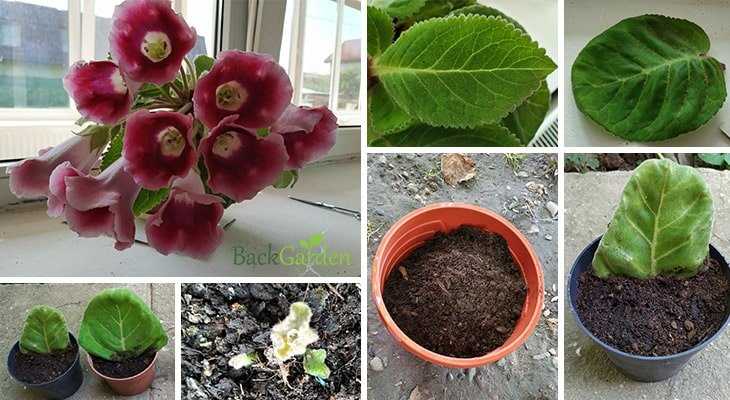
Always read and follow the instructions on the fertilizer packaging. The recommended dosage and frequency of application may vary depending on the brand and type of fertilizer. Overfertilizing can damage the roots and lead to leaf burn, so it’s important to follow the instructions carefully.
3. Apply Fertilizer During the Growing Season
Gloxinias are actively growing during the spring and summer months. This is the time when they need the most nutrients, so plan to fertilize them regularly during this period. It’s generally recommended to fertilize gloxinias every two weeks during the growing season.
4. Water Before Fertilizing
Before applying fertilizer, make sure the soil is moist. This will help prevent the roots from burning when the fertilizer is applied. Water the gloxinia thoroughly and allow excess water to drain away before proceeding with the fertilization.
5. Use a Diluted Solution
When applying fertilizer to gloxinia plants, it’s best to use a diluted solution. Mix the fertilizer according to the instructions on the packaging, and then dilute it further by adding additional water. This will ensure that the concentration is appropriate and reduce the risk of overfertilizing.
6. Avoid Fertilizing Dormant Plants
Gloxinias go through a period of dormancy during the winter months when they require less water and nutrients. During this time, it’s best to avoid fertilizing them. Resume fertilization in the spring when new growth begins to appear.
7. Monitor the Plant’s Response
Pay attention to how your gloxinia plant responds to the fertilizer. If you notice any signs of nutrient deficiency or excess, such as yellowing leaves or wilting, adjust the fertilization schedule or dilution accordingly. It’s important to strike a balance to ensure healthy growth and blooming.
By following these fertilization tips, you can help your gloxinia plants thrive and produce beautiful blooms.
Gloxinia Propagation Techniques
Gloxinia can be propagated through several methods, including leaf cutting, seed sowing, and tuber division. Here are some techniques to propagate gloxinia:
Leaf Cutting
Leaf cutting is a common method of propagating gloxinia. Here’s how to do it:
- Select a healthy leaf from the parent plant.
- Cut the leaf at the base, ensuring that you have a stem with at least 1-2 inches in length.
- Dip the cut end of the stem into a rooting hormone to stimulate root growth.
- Place the stem into a pot filled with a well-draining soil mix.
- Keep the soil moist and place the pot in a warm and humid environment, such as a greenhouse or a plastic bag.
- After a few weeks, roots should start to develop, and a new plant will start growing from the base of the leaf.
- Once the new plant has a few leaves, it can be transplanted into its own pot.
Seed Sowing
Another way to propagate gloxinia is through seed sowing. Here’s how to do it:
- Collect mature gloxinia seeds from the parent plant.
- Fill a seed tray or a small pot with a well-draining seed-starting mix.
- Sow the seeds on the surface of the soil, gently pressing them in without covering them.
- Mist the soil with water to keep it moist.
- Place the seed tray or pot in a warm and well-lit area, but avoid direct sunlight.
- Keep the soil consistently moist and within a few weeks, the seeds should germinate.
- Once the seedlings have a few leaves, they can be transplanted into their own pots.
Tuber Division
Tuber division is another method to propagate gloxinia, especially when the plant has grown large tubers. Here’s how to do it:
- Remove the plant from its pot, being careful not to damage the tubers.
- Gently separate the tubers, ensuring that each tuber has enough roots attached.
- Plant each divided tuber into its own pot filled with a well-draining soil mix.
- Water the newly planted tubers and keep the soil moist.
- Place the pots in a warm and humid environment.
- Within a few weeks, new growth should appear from each divided tuber.
- Continue to care for the new plants as you would care for mature gloxinia.
By using these methods, you can propagate gloxinia and enjoy more of these beautiful flowering plants in your home or garden.
Pruning and Maintenance of Gloxinia Plants
Pruning and maintenance are essential for ensuring the health and beauty of your Gloxinia plants. By following a few simple steps, you can keep your plants looking vibrant and encourage new growth.
1. Removing spent flowers:
As the flowers on your Gloxinia plants fade, it’s important to remove them promptly. This not only keeps the plant looking tidy but also encourages the development of new blooms. Simply pinch off the spent flowers at the base of the stem.
2. Trimming back foliage:
Gloxinia plants can develop bushy foliage that may become overgrown. To maintain a compact and well-shaped plant, trim back any excessive foliage. Use clean, sharp scissors to carefully cut the leaves or stems just above a set of healthy leaves.
3. Controlling pests:
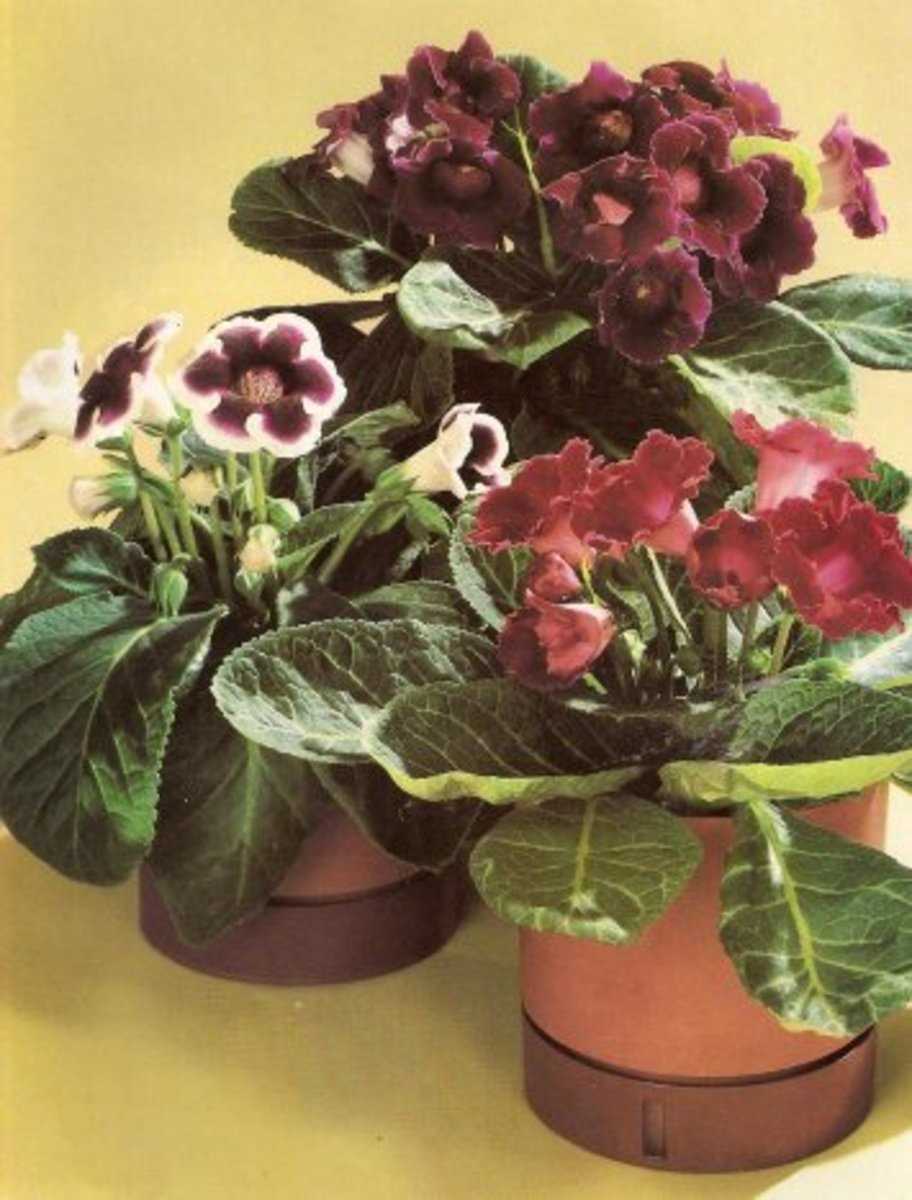
Gloxinia plants can be susceptible to pests such as aphids, mealybugs, and spider mites. Regularly inspect your plants for any signs of infestation, such as sticky residue, webs, or visible insects. If pests are present, treat your plants with an appropriate organic or chemical insecticide.
4. Watering and fertilizing:
Gloxinia plants require regular watering to keep the soil consistently moist, but not waterlogged. Water the plant thoroughly when the top inch of soil feels dry to the touch. During the growing season, it’s important to fertilize your Gloxinia plants every two weeks with a balanced fertilizer formulated for blooming plants.
5. Providing proper light and temperature:
Gloxinia plants prefer bright but indirect light. Place your plants in a location where they will receive morning or evening sun, but are protected from intense midday sunlight. Additionally, maintaining a temperature range of 65-75°F (18-24°C) will promote healthy growth and blooming.
6. Repotting when necessary:
Gloxinia plants can outgrow their pots over time. If you notice that the roots are protruding from the drainage holes or the plant is becoming root-bound, it’s time to repot. Choose a pot that is slightly larger than the current one and use well-draining soil. Gently remove the plant from its current pot, loosen the roots, and place it in the new pot. Fill in with fresh soil and water thoroughly.
7. Winter care:
During the winter months, Gloxinia plants go dormant. Reduce watering and stop fertilizing during this time. Place the plant in a cool location with temperatures around 50-55°F (10-13°C) and provide indirect light. Resume regular care in the spring when new growth appears.
Conclusion:
Pruning and maintaining your Gloxinia plants is a crucial part of keeping them healthy and vibrant. By following these tips, you can enjoy beautiful blooms and lush foliage year after year.
Wintering Gloxinia Plants
Gloxinia plants are native to tropical regions and are sensitive to cold temperatures. Therefore, it is important to properly winterize them to ensure their survival during the colder months. Here are some handy tips and advice for wintering gloxinia plants:
1. Indoors or in a Greenhouse
Gloxinia plants should be moved indoors or into a greenhouse before the first frost hits. They cannot tolerate freezing temperatures and will suffer damage or even die if left outside during winter.
2. Temperature
Gloxinia plants prefer temperatures between 60-70°F (15-21°C). Avoid exposing them to extreme temperature fluctuations, as it can stress the plant and affect its ability to bloom in the following season.
3. Light
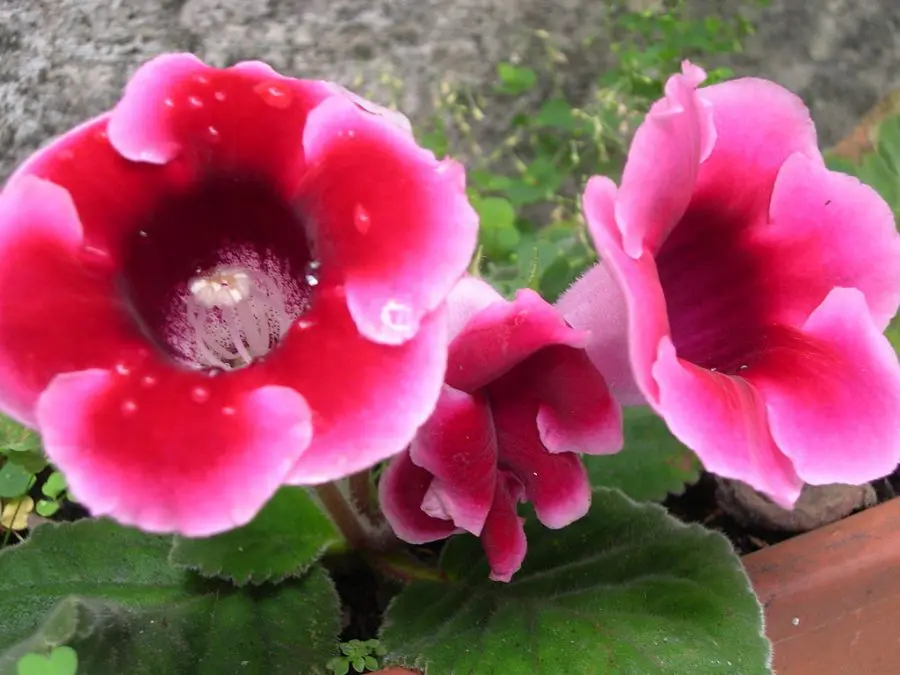
Gloxinia plants require bright, indirect light during winter. Place them near a window where they can receive ample sunlight, but avoid direct sun exposure, as it can scorch the leaves.
4. Watering
During winter, reduce the frequency of watering as gloxinia plants enter a dormant period. Allow the top inch of soil to dry out before watering. Overwatering can lead to root rot, so it is important to find the right balance.
5. Humidity
Gloxinia plants thrive in high humidity environments. To provide them with the necessary moisture, place a tray filled with water and pebbles beneath the plant. As the water evaporates, it will create a humid microclimate around the plant.
6. Fertilizing
During winter, gloxinia plants do not require as much fertilizer as they do during the growing season. Reduce the frequency of fertilization to once a month using a diluted, balanced fertilizer.
7. Pests and Diseases
Inspect your gloxinia plants regularly for any signs of pests or diseases. Common issues include aphids, mealybugs, and powdery mildew. If you notice any problems, treat them promptly with the appropriate insecticide or fungicide.
8. Propagation
Winter is a good time to propagate gloxinia plants. Take stem cuttings and root them in moist soil or water. This way, you can ensure the continuity of your gloxinia collection for the next growing season.
9. Pruning
During winter, you can also prune your gloxinia plants to promote bushier growth. Remove any dead or damaged leaves, as well as any leggy or overgrown stems. This will help maintain a compact and attractive plant.
By following these wintering tips and advice, you can ensure the health and vitality of your gloxinia plants. With proper care, they will reward you with beautiful blooms when spring arrives.
Common Pests and Diseases of Gloxinia
Gloxinia plants are susceptible to a few common pests and diseases that can affect their overall health and appearance. It is important to identify and treat these issues promptly to ensure the continued well-being of your plants.
Pests
Here are some common pests that can infest gloxinia plants:
- Spider mites: These tiny pests can be identified by the fine webbing they create on plants. They suck the juices from leaves, causing yellowing and wilting.
- Mealybugs: These small insects have a white, cotton-like appearance. They feed on plant sap and can cause stunted growth and leaf distortion.
- Aphids: These soft-bodied insects can be green, black, or brown. They feed on the sap of plants and can cause leaves to curl and distort.
To control pests, you can use organic insecticidal soaps or Neem oil. It is important to treat the plant thoroughly, including the undersides of leaves, where pests often hide.
Diseases
Gloxinia plants are also vulnerable to certain diseases:
- Powdery mildew: This fungal disease appears as a white powdery coating on leaves. It can be caused by high humidity or poor air circulation.
- Rhizoctonia rot: This disease affects the roots of the plant, causing them to become soft and mushy. Overwatering and poor drainage can contribute to this problem.
To prevent diseases, make sure to provide proper air circulation and avoid overwatering. If powdery mildew appears, remove affected leaves and apply a fungicide. If rhizoctonia rot is present, remove the affected plant and improve drainage in the growing medium.
Conclusion
By being proactive and implementing appropriate preventive measures, you can keep common pests and diseases at bay and maintain healthy gloxinia plants. Regular inspection and prompt treatment are key to the success of your gloxinia care routine.
Handy Tips and Advice for Growing Gloxinia
Gloxinia is a beautiful flowering plant that can add a burst of color to any home or garden. To ensure that your gloxinia thrives and produces stunning blooms, consider the following handy tips and advice:
1. Choosing the Right Location
Gloxinia thrives in bright but indirect light. Place your plant in a location where it can receive bright, filtered light throughout the day. Avoid placing it in direct sunlight as this can scorch the leaves and flowers.
2. Providing the Ideal Temperature
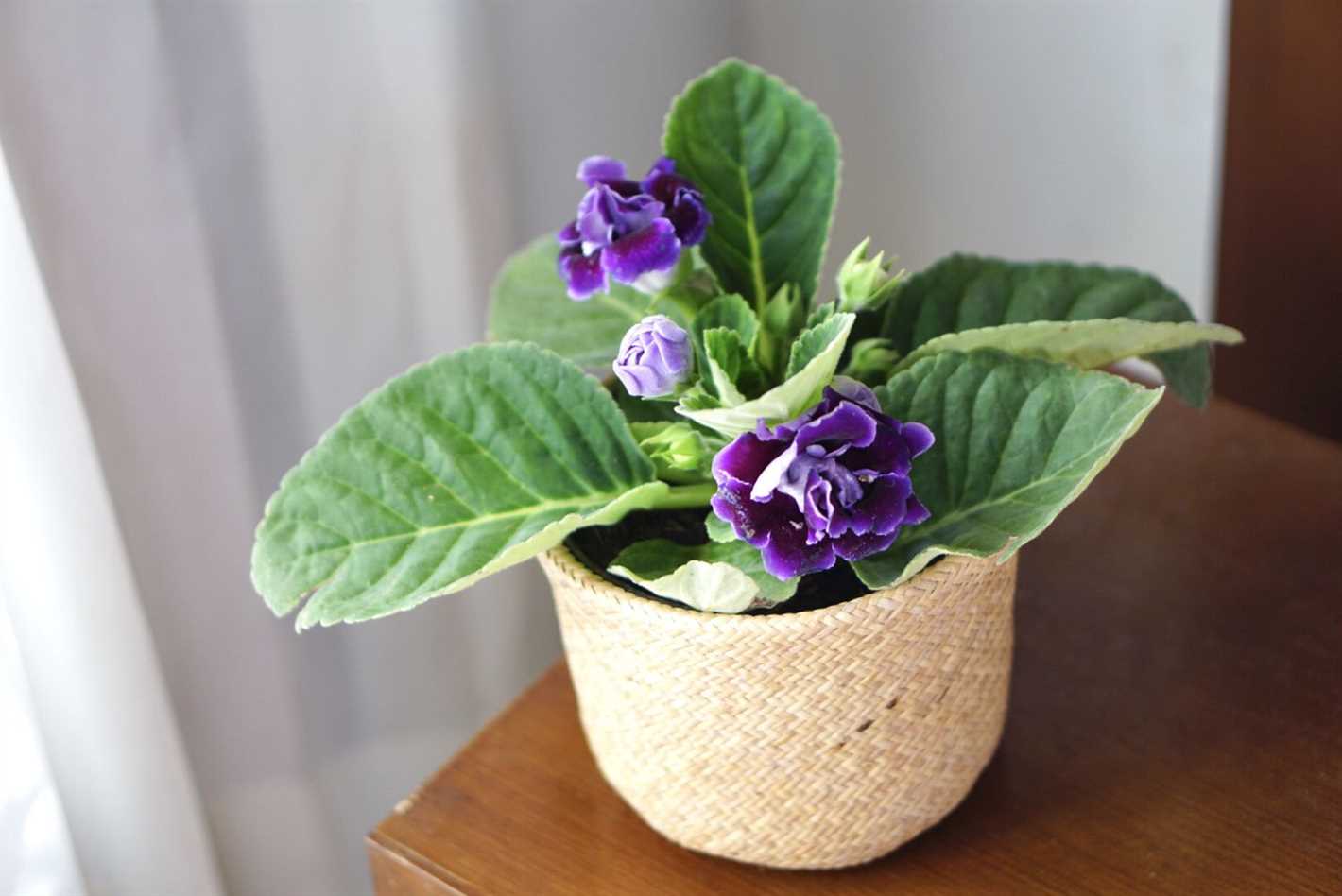
Gloxinia prefers warm temperatures ranging from 70 to 75°F (21 to 24°C). Avoid exposing your plant to drafts or extreme temperature fluctuations as this can cause stress and lead to poor growth.
3. Watering Properly
Water your gloxinia thoroughly but allow the top inch of soil to dry out before watering again. Avoid overwatering as this can lead to root rot. It’s also important to water your plant from the bottom to prevent water from getting on the leaves and causing damage.
4. Feeding Regularly
Use a balanced, water-soluble fertilizer to feed your gloxinia every two weeks during the growing season. Follow the package instructions for the recommended dosage. This will provide your plant with the necessary nutrients for healthy growth and vibrant blooms.
5. Supporting the Blooms
Gloxinia blooms can be quite heavy, so it’s important to provide support to prevent the stems from breaking. Use stakes or small supports to gently tie up the stems and keep them upright. This will help your plant look its best and prevent any damage.
6. Propagating Gloxinia
If you want to propagate your gloxinia, you can do so by taking leaf cuttings or dividing the rhizomes. Leaf cuttings can be taken from healthy leaves and placed in a moist growing medium until they develop roots. Rhizomes can be divided during the dormant period, ensuring that each division has at least one healthy growth point.
7. Wintering Your Gloxinia
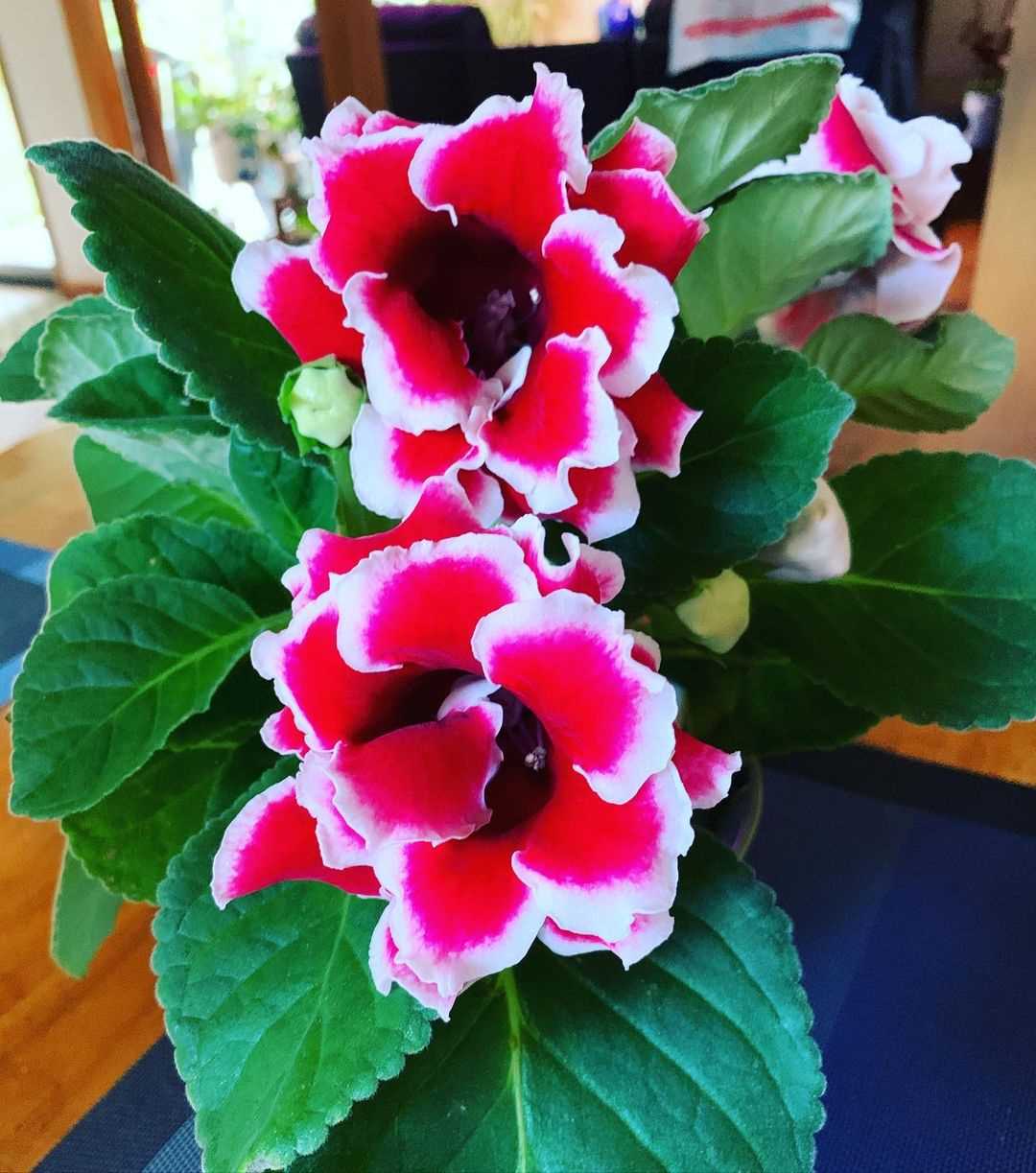
Gloxinia is a tropical plant that goes dormant in the winter. During this time, reduce watering and stop feeding your plant. Keep it in a cool location with temperatures of around 60°F (15°C). Once the plant begins to show signs of new growth in the spring, resume regular care.
By following these handy tips and advice, you can enjoy the beauty of gloxinia in your home or garden and ensure its healthy growth and stunning blooms for years to come.
Q&A:
How often should I water my gloxinia?
Gloxinias should be watered regularly, about once a week. They prefer moist soil, but be careful not to overwater as this can lead to root rot.
Can I propagate my gloxinia from leaf cuttings?
Yes, gloxinias can be propagated from leaf cuttings. Simply take a healthy leaf and place it in a pot with moist soil. Keep the soil consistently moist, and in a few weeks, you should see new growth.
Can I keep my gloxinia outside during the summer?
Gloxinias prefer to be kept indoors, as they are sensitive to temperature fluctuations and direct sunlight. It’s best to keep them in a location with bright, indirect light.
How do I fertilize my gloxinia?
Gloxinias should be fertilized every two weeks during the growing season. Use a balanced fertilizer, diluted to half strength, and apply it to the soil. Be careful not to get any fertilizer on the leaves, as it can cause burns.
What is the best temperature for gloxinia?
Gloxinias prefer temperatures between 65-75°F (18-24°C). They should be kept away from cold drafts and extreme temperature changes.
Do gloxinias need a lot of sunlight?
Gloxinias prefer bright, indirect light. Direct sunlight can burn their leaves, so it’s best to keep them in a location with filtered light or away from windows.
How do I store my gloxinia during the winter?
Gloxinias go dormant during the winter months. To store them, allow the foliage to die back naturally, then dig up the tubers and store them in a cool, dark place. Check them periodically to make sure they are not rotting.
Video:
GLOXINIA , How to grow gloxinia and its care , propagation , speciality.







